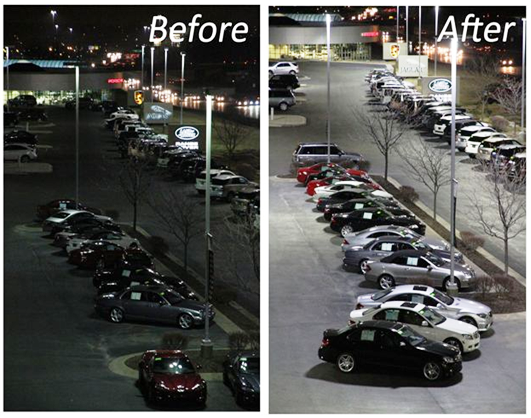Four factors associated with lighting technology will encourage companies with expensive lighting to look at cost saving options. Those options often improve the quality of light while dramatically reducing lighting expenses.
1) Old lighting phase out
One key factor supporting a review of your current light technology is the little known fact that multiple light bulbs will no longer be available. A variety of bulbs that create more heat than light are being phased out of production. Replacing those bulbs will soon become difficult and expensive. New technologies like LED lighting are far superior in light quality, energy efficiency and cost effectiveness; it just won’t make sense to continue using the phased out options.
2) Lower Energy Expenses
Another factor is profitability. Many companies are looking for ways to increase efficiency and reduce expenses. Light technology which has a low efficiency value, will be viewed as a huge expense that needs to be reduced by bulbs with a high efficiency value. The result is often increased profit margins and a better bottom line as energy expenses are reduced.
3) Cost of bulb replacement
Bulbs that have a short life span will cease being useful when the cost of the labor to replace them is factored in. A slightly more expensive bulb that lasts 10 times longer (and rarely needs replacing) will become the preferred choice!
4) Incentives fund energy efficient conversion
A growing number of communities and energy companies are offering attractive incentives that help fund conversion to energy efficient technology. Using rebate programs, tax incentives, PACE financing as well as educational seminars, they are helping make fundamental changes in lighting virtually cost free. Any cost associated with conversion to an energy efficient technology is often funded by the combination of incentives and energy cost savings that can yield a positive cash flow.
The Cost of Inaction!
According to the U.S Environmental Protection Agency 30% of the energy used in the average commercial setting is wasted! Not taking action to eliminate that waste comes with a significant price tag. When the four factors listed above are used to evaluate the lighting in most commercial settings, a plan of action begins to make sense and is often easier to develop.
If you would like to know if energy savings are possible for your building or business the Energy Alliance Group has compiled a free report entitled Ten Questions to Ask Before an Energy Efficiency Upgrade! If you would like a copy of the report sent to you it is available HERE!

The people’s incredulity is the bigger obstacle to implement energy efficiency measures